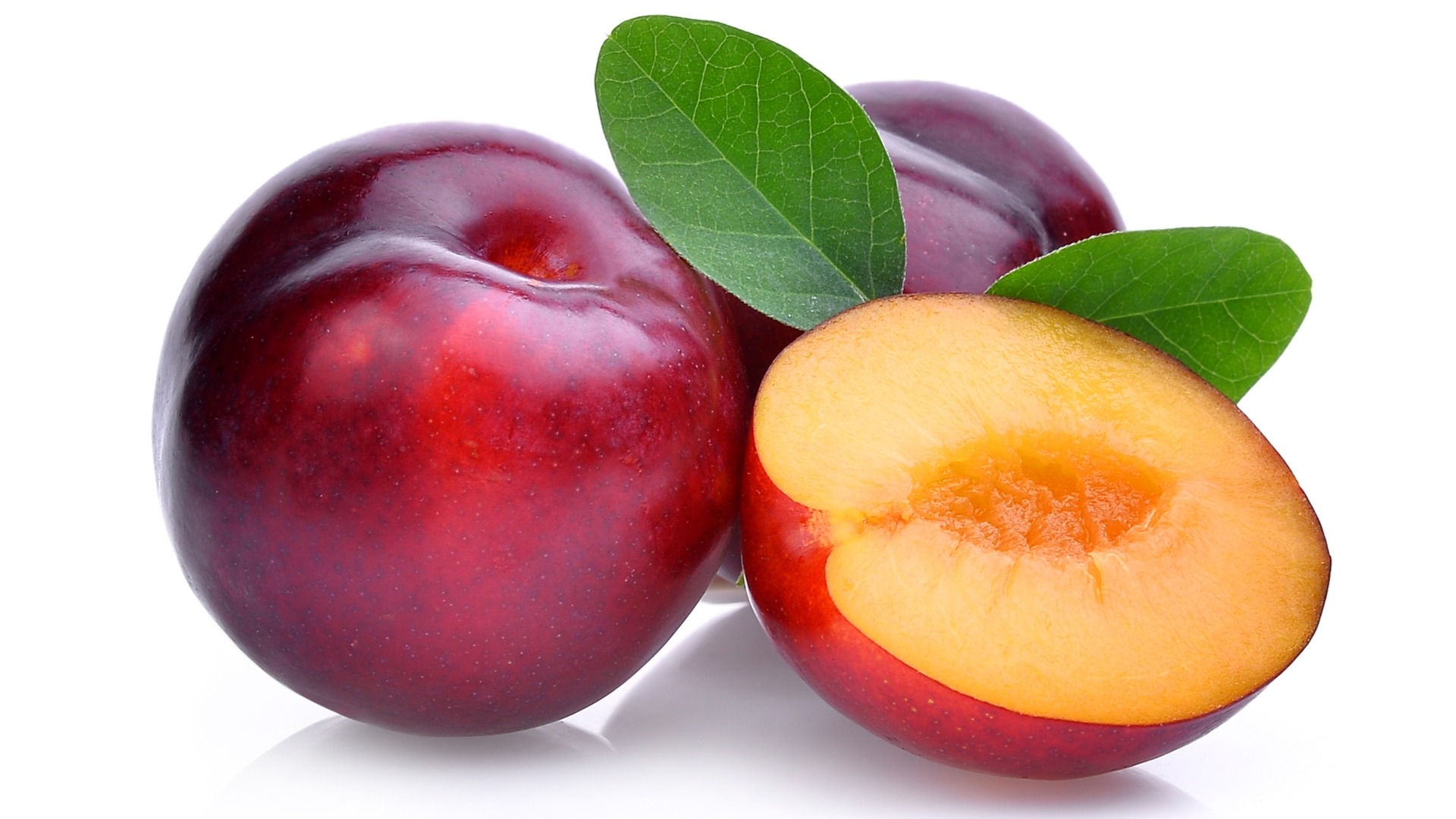Plums are a delightful summer fruit that add sweetness and tartness to salads, desserts, and snacks. With their dusty blue hue and juicy flesh, ripe plums burst with flavor. However, like any fresh produce, plums don’t last forever.
It’s frustrating when you bite into a plum expecting that rush of sweet-tart juice only to find it bland, mushy, or even rotten. To avoid wasting plums and ruining recipes, it’s important to know how to identify bad plums.
In this guide we’ll cover everything you need to know about determining plum freshness including
- How long plums last
- Signs of spoiled plums
- Safe plum handling and storage
- What causes plums to spoil
Armed with this knowledge, you’ll be able to enjoy plums at their peak flavor and texture. Let’s dive in!
How Long Do Plums Last?
Plums can last 1-3 weeks from the time they are picked depending on variety and how they are stored. Here are some general plum shelf life guidelines:
- Unripe plums: 1-2 days on the counter to ripen
- Ripe plums: 2-5 days on the counter, 3-7 days in the fridge
- Frozen plums: 9-12 months in the freezer
Of course, these timeframes depend on several factors including ripeness level, storage conditions, and handling Later, we’ll cover tips for maximizing plum longevity
How to Tell If Plums Have Gone Bad
Learning to recognize signs of spoiled plums is crucial. Here are the top indicators that plums have gone bad:
1. Mushy, Shriveled Texture
A fresh, ripe plum should yield slightly to gentle pressure but still feel firm. As plums spoil they become mushy and waterlogged in texture often accompanied by shriveled wrinkled skin.
Press lightly on the plum’s surface. If your thumb sinks in leaving an indentation, this is a clear sign of overripeness. Avoid plums that feel overly soft or collapsed as they’ll quickly deteriorate.
2. Moldy Spots
The development of mold whether in small spots or covered in fuzzy growth is a definite sign plums have spoiled. Mold can appear in various colors including white, green, or grey and indicates bacteria has taken hold.
Discard any plums that are moldy. And do not try to cut away the moldy parts as the spores may have spread. For safety, keep moldy plums away from other produce.
3. Unpleasant Odor
A ripe, fresh plum should have a sweet, floral aroma. If you detect sour, fermented scents from the plum, this suggests spoilage. An “off” odor typically means the interior flesh has begun to break down.
Trust your nose when evaluating plums. Any foul, rotten smell means they’ve gone bad and should not be eaten.
4. Discolored or Sunken Skin
While ripe plums do show some redness in their skin, avoid fruit with large brown or black soft spots. These patches indicate the plum’s skin has broken down providing entry points for bacteria.
In addition, a sunken, deflated appearance in the skin signals the plum is drying out past its prime. Plums with significant discoloration or shriveling have a shorter remaining shelf life.
5. Taste and Texture Changes
Your first bite is the ultimate test of a plum’s freshness. The taste of a perfectly ripe plum is a balance of sweetness and tangy tartness with a soft crunch from the skin.
However, as plums spoil, their flesh becomes dry and fibrous lacking juice. The flavor profile also changes with rotten plums tasting bland, bitter or fermented.
If the taste or texture seem off, your plum is likely overripe and best discarded. Don’t force yourself to eat bad fruit.
Proper Plum Handling
Mishandling plums during transportation, storage and prep accelerates their decline. Here are some tips for proper plum care:
- Avoid bruising plums. Handle gently and don’t overcompress them.
- Wash plums just before eating. Moisture promotes mold growth.
- Don’t refrigerate unripe plums. Cold halts ripening. Keep on the counter.
- Once ripe, move plums to the fridge to slow deterioration.
- Store plums loose not stacked tightly to prevent crushing.
- Keep plums away from ethylene producing fruits and vegetables which hastens ripening.
With careful handling, you can maintain plums at peak quality for longer. Now let’s look at optimal storage methods.
How to Store Plums
Using the right storage techniques extends plum shelf life. Here are the best practices for storing plums:
Room Temperature Storage
- Keep unripe plums at room temperature to allow ripening
- Place in a paper bag to concentrate ethylene and speed ripening
- Once ripe, enjoy plums within 2-3 days
Refrigerator Storage
- Place ripe plums loose in the crisper drawer
- Refrigeration preserves quality for 3-7 days
- Wash just before eating as moisture causes spoilage
Freezer Storage
- Wash, dry, pit and slice plums before freezing
- Arrange slices in single layer on tray and freeze solid
- Transfer frozen slices to airtight bags or containers
- Frozen plums last 9-12 months
By choosing suitable storage methods, you can make plums last longer. Next, we’ll look at what factors actually cause plums to perish.
What Causes Plums to Spoil?
There are a few key factors that lead to plum spoilage including:
-
Ripening: As plums ripen, their cell structures begin deteriorating making them more vulnerable to bacteria.
-
Bruising and cuts: Any damage to the plum’s skin allows microbes to invade and break down the interior flesh faster.
-
Temperature: Heat and cold extremes hasten plum breakdown. Refrigeration can slow ripening and bacteria growth.
-
Ethylene exposure: This natural gas accelerates ripening in plums and other produce which shortens shelf life.
-
Moisture: Exposure to excess moisture from washing or condensation promotes mold growth on plum skin.
By understanding what causes plums to perish, we can take steps to prolong their freshness through proper handling and storage.
Plum Freshness FAQs
Let’s round up this guide with answers to some frequently asked questions about plum longevity:
How can you speed up ripening of unripe plums?
Place hard plums in a paper bag at room temperature. The bag concentrates the ethylene gas they naturally produce, accelerating the ripening process. Ripe in 1-2 days.
What is the best way to wash plums?
Rinse plums gently under cool water just before eating. Don’t soak or wash plums prior to storage as moisture quickens spoilage.
Can you freeze overripe plums?
Freezing is great for preserving usable plums that are slightly overripe but not rotten. Prepare and freeze as slices within 2 days of overripening for best quality and taste.
How do you know if frozen plums are still good?
Inspect plums when thawing. Discard any with mold, off odors or an extremely mushy texture indicative of spoilage during freezing.
Can spoiled plums make you sick?
While perfectly safe when fresh, overripe or rotten plums can harbor foodborne pathogens leading to illness if consumed. Always discard spoiled plums.
I hope these plum freshness tips help you reduce waste and enjoy plums at their flavorful best. Now you have the knowledge to store, handle, and identify bad plums.

Shelf Life and Storage Tips

Plums are a delectable stone fruit known for their juicy sweetness and smooth exterior. Like many fruits, plums have a shelf life that people who want to enjoy them at just the right level of ripeness are interested in. How you store plums and whether they are ripe or not when you buy them have a big impact on how long they last.
Plums that aren’t ripe yet can be left on the counter for one to two days until they’re just right. Once ripe, plums will usually last another 2 to 3 days if kept at room temperature. Ripe plums, on the other hand, can stay fresh for 3 to 5 days, and sometimes even up to a week, if you put them in the fridge.
The storage environment plays a crucial role in preserving the quality of plums. Keeping them somewhere cool, like in the crisper drawer of your fridge, between 32°F and 45°F can help slow down the ripening process. Proper storage not only extends their shelf life but also maintains the plums desirable texture and taste. If longer preservation is required, plums can be pitted and frozen, extending their usability up to 10-12 months.

Plums are a group of different stone fruits with lots of different tastes and textures. They also have healthy nutrients like vitamin C and antioxidants. This part will talk about the different kinds of plums, how to tell when they are ready to eat, the best times for them to ripen, and the different traits that each type has.
Plums come in a variety of shapes and colors, including blue plums and purple plums. These stone fruits come from the rose family and are mostly put into groups based on their color, size, and where they come from. Common types include European, Japanese, and Damson plums.
To determine if plums are ripe, one should assess their color, smell, and texture. A ripe plum typically has a deep, even color with a sweet aroma. Its skin should yield to gentle pressure, indicating softness without being overly mushy.
For plums to ripen uniformly, they need exposure to room temperature away from direct sunlight. To hasten ripening, plums can be placed in a paper bag to concentrate the ethylene gas they emit. Plums should not be put in the fridge until they are at the right level of ripeness. This is because cold temperatures can stop the ripening process.
Plum Varieties and Characteristics
Each plum variety has its own unique characteristics in terms of flavor, skin, and flesh texture. For instance:
- European plums are usually oval and have yellow to greenish-yellow skin. They taste sweet and are great for drying.
- Japanese plums are rounder, juicer, and colored red to purple. They are usually eaten fresh.
You can tell how good a plum is by how firm it is, how few wrinkles it has, and how few spots or bruises it has. Not only are they praised for how good they taste, but they are also good for you because they contain antioxidants and vitamin C.
Proper storage maximizes the lifespan of plums by maintaining their freshness and flavor. Depending on how long they need to be preserved, one can store plums at room temperature, refrigerate them, or freeze them for longer-term storage. Each method has specific conditions that must be met to prevent spoilage and maintain quality.
At room temperature, plums should be stored in a cool place, away from direct sunlight and heat sources. They’ll ripen more evenly if you keep them in a paper bag that lets air flow through it. Plums give off ethylene gas, which can make other foods ripen faster. Because of this, they shouldn’t be stored near foods that are sensitive to ethylene gas.
When putting plums in the fridge, they should be in a plastic bag or an airtight container in the crisper drawer to keep them from getting bruised and the humidity level steady. This method can extend the fruits freshness for up to two weeks. Its important to avoid washing plums before refrigerating as added moisture can promote mold growth.
For long-term preservation, freezing is an effective option. The fruit should be washed, dried, and cut into wedges. Each wedge should then be placed on a cookie sheet and frozen separately. Once frozen, the plum wedges can be transferred to an airtight container or a sealed plastic bag. Plums can be stored this way for up to 10 to 12 months, but the taste and texture may change a little after they’ve been thawed.

Plums’ shelf life depends on a number of important factors, such as how ripe they are, how they are stored, and how much time they spend near other fruits that produce ethylene. Understanding these can help maintain freshness and prevent premature spoilage.
